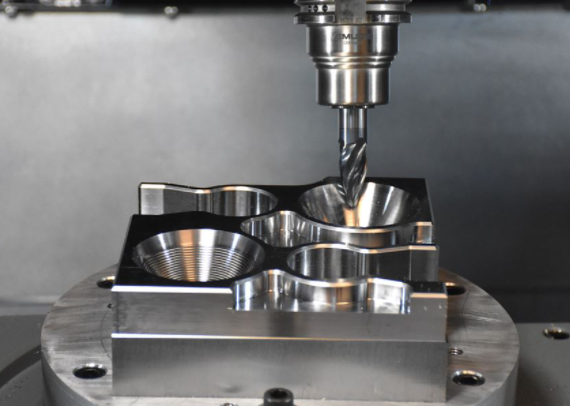
news
2022.5.20
In the process of die casting, the mold is constantly heated by high-temperature liquid metal, and its temperature is rising. Too high die temperature will cause some defects of die castings, such as die stacking, bubbling, cracking, hot cracking, etc. at the same time, when the die works in the high-temperature environment for a long time, the strength of the die material decreases, resulting in the surface crack of the die and the life of the die. In order to alleviate and solve the above problems, a spraying or coating release agent is often used in die casting production. A mold release agent is designed for special molding and processing. It is an auxiliary agent for the production of metal die-casting products. Its main function is to help the metal die-casting products to be taken out of the mold, and keep the integrity and post-processability of the products. Today, we talk about everything about metal die castings.

The main function of the release agent is to form a uniform release film on the surface of the mold, so that the molded object can be released. The second function is to consider the quality and style of the molded surface, the scale on the mold, the feasibility of cleaning and the feasibility of coating. Other considerations include: product storage life, product stability, user (and manufacturer) health or safety concerns, and corrosion problems. The basic components of release agent include different types of wax, resin, oil and silicone oil. The release agent for metal die casting products is mainly external release agent. In die casting practice, most of the release agents are water-based and must be mixed with water, and the recommended dilution ratio of most release agents is 50 ~ 100.
Die casting water-based release agent series products are required to have high stability and very good release performance. It can be diluted to a low concentration for demoulding. In general, the user’s requirements for water-based die casting release agent include: 1 Good demoulding performance; 2. Ensure the appearance quality of die castings; 3. Good cost performance and low price; 4. There is no unpleasant smell when using; 5. After the release agent is mixed, there is no floating oil layer on the surface.
Generally speaking, water-based release agent is composed of at least three components: basic material, emulsifier and water. The basic material can be considered as an effective component, and finally play the role of demoulding and lubrication. The materials used are generally oil, grease, wax, polymer and silicone. The function of the emulsifier is to evenly disperse the above materials in a continuous aqueous phase in extremely fine particles to form a stable lotion. Water is only used as a carrier. The main components of water-based release agent emulsified with refined oil and various additives are: mineral oil, animal and vegetable oil, synthetic grease, natural paraffin, synthetic paraffin, silicone oil, solid (lubricating oil), emulsifier, additives, mildew inhibitor and rust inhibitor. High quality mold release agents are mostly prepared from 15-25 kinds of raw materials. If the key components or additives are changed by 1%, their mold removal performance may be very different, which will also bring great changes to the cost and price. Each type of release agent has its best scope of application and object. If the wrong object is used, no matter how high-quality products can play its role. The water-based release agent generally does not contain solid particles. When used, it can be diluted with water more than ten times to a hundred times, and the water content generally accounts for more than 95%.
Due to the large amount of water, it is different from the traditional oil-based or solvent-based release agent in many aspects. The release effect of water-based release agent depends on the film deposited on the surface of the cavity after spraying, which is only micron thick. Therefore, there are higher requirements for composition selection and application technology. However, its advantages are also obvious, such as conducive to automatic operation, good cooling effect, no accumulation, improvement of casting surface quality, reduction of internal pores, safe use, clean production, reduction of environmental pollution and so on. Based on this, some people believe that the intergenerational development of water-based release agent is a major change in the development history of die-casting release agent.
The release agent for aluminum alloy die casting forms a protective film on the die surface to reduce the thermal and mechanical impact of aluminum alloy liquid on the die material, reduce the friction and wear of castings on the die surface, and slow down the physical and chemical effect of aluminum alloy liquid on the die material. The performance of the film has a very important impact on the service life of the die.
According to the characteristics of high hot extrusion temperature and strong die adhesion of metal, a good release agent should have the following properties:
(1) Good lubrication and demoulding performance. That is, the release agent is required to have sufficient adsorption strength on the metal surface at high temperature, form a complete shielding layer in the process of metal deformation, and have a low friction coefficient;
(2) Good cooling and thermal insulation. The high temperature of hot extrusion blank, coupled with plastic deformation heat and friction heat, is easy to reduce the strength of the die and accelerate the wear, so as to shorten the service life. A good release agent should have high-efficiency cooling effect and heat insulation effect to make the mold work at a lower temperature;
(3) Good high temperature lubrication performance. As a hot extrusion release agent, it must have good lubrication performance to ensure its lubrication and release performance;
(4) Good stability. The use temperature of the release agent shall not be changed, that is, the stability of the oxidation agent shall not be kept within the range of good combustion requirements. In addition, the release agent shall not produce harmful gas and smoke during use.
